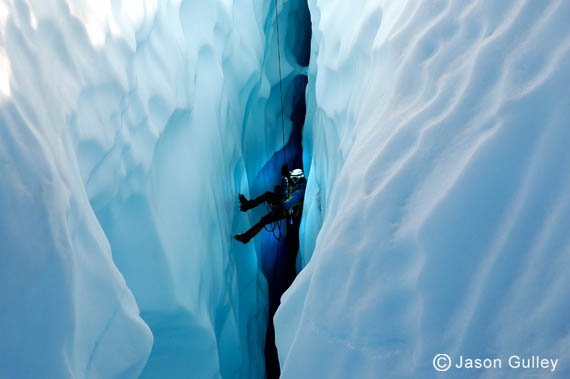
|
Caves formed completely in ice are properly termed
glacier caves, as that is where they typically occur. Ice caves, by
contrast, are caves of any type that contain speleothems
made of ice. Glacier caves are very dynamic and change from year
to year. Large glacier cave systems have disappeared as glaciers melt
and retreat around the world due to global warming. |
![]()
 |
 |
Two images from the Ngozumpa Glacier in Nepal
 |
|

Huge entrance on the Khumbu Glacier in Nepal. Note figure in red in distance.
Scalloped walls
indicate erosion by air currents.

This passage under the Ngozumpa glacier reveals a classic phreatic-vadose
transition.

Glacial caves are often entered through crevasses which have captured surface
water.


Wading through water is not uncommon in glacial caves.
![]()
| Back to: | |
 |
Created: May 3, 2005 Author: Dave Bunnell |
